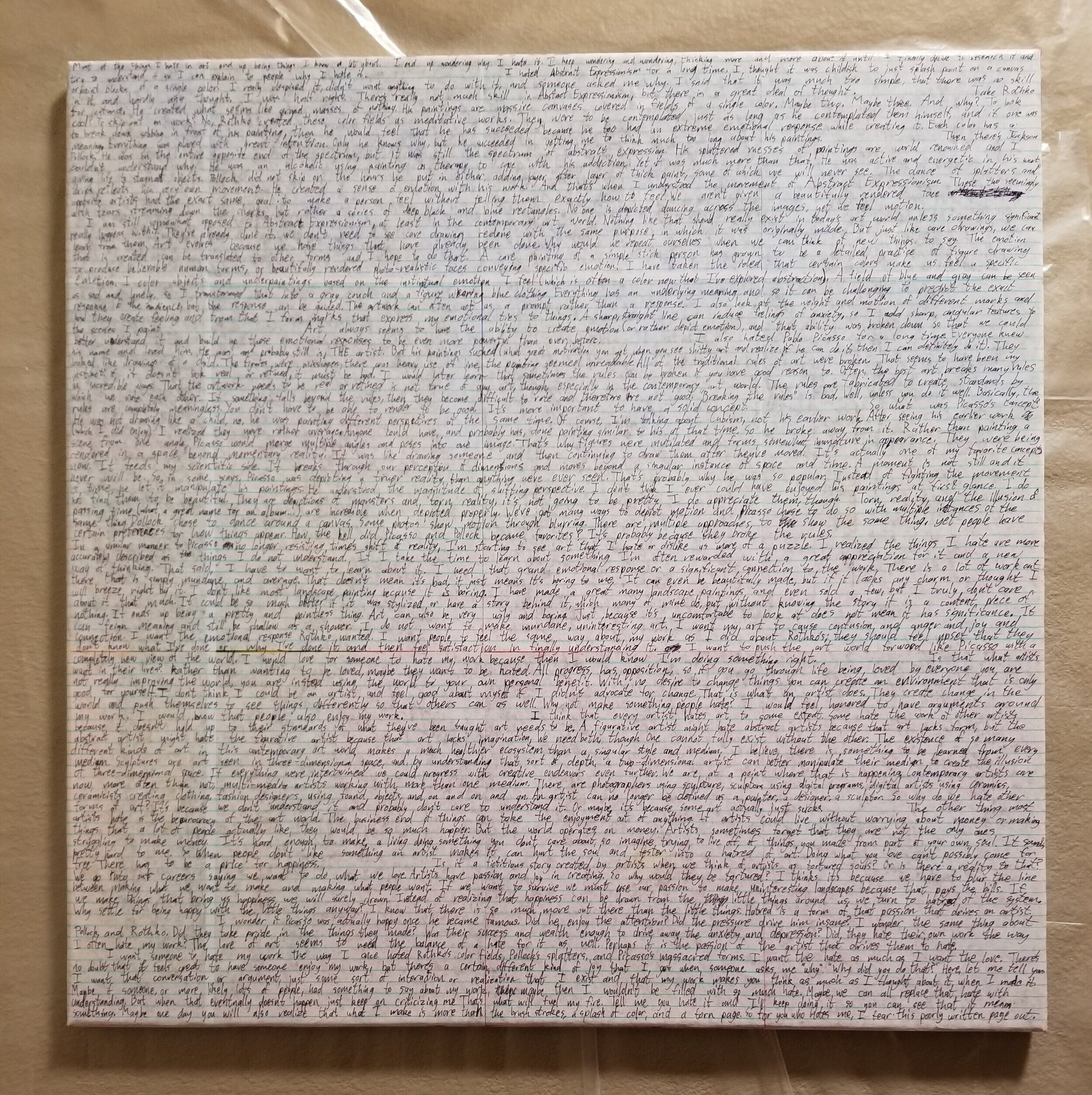Sometimes I see things that catch my attention and hold it for a while. It confuses me or causes me to wonder. I think those kinds of things that cause a moment of pause are some of the most interesting things to paint. When I choose an image to work with, I often have at least some idea of what it is I want to paint. I will sketch the idea out, find the location I want to stage a photograph, and have my girlfriend, Selena, or a friend take the photo. But there are some moments that break this practice.
Sometimes I see scenes play out right before me and I can’t help but to snap a photo of it. I do not always know if the photo I take will actually be useful to me. I take many photos of odd things that turn out to be meaningless by the time I review it. It’s part of my process to come up with ideas for imagery. What better place to look for ideas than real life. This particular scene was so strange but somewhat mundane that I felt inclined to photograph it. A series of trash cans were strewn across a grassy field with trees looming in the distance in front of a bright orange sky. It was ominous, there was no real reason the trash cans should be out and the sky was almost unnatural in appearance. There was something about this image that made it a prime candidate for my current technique of layering and tearing paper. It was mundane and strange and it needed to be seen.
Once I decided on the image itself, I stretched a canvas and projected the image onto the canvas. The reason I have been projecting the image is to ensure some consistency after I have covered the painting with layers of paper. I do multiple projections throughout the process to keep the general composition the same. Once a general outline is made, I filled in the space with odd colors for the underpainting. Originally, I used this technique of odd colors (usually complimentary colors) to create a greater sense of depth in the painting, but now I am using the colors to create more emotional connections and give a sense of chaos and a world turned upside down. The layering of marks is still present in my work, though.
The way I layer paper is just like adding an additional layer before continuing the same painting. It is the way I see reality, multiple overlapping layers which eventually break down and reveal what is beneath. It is multiple perspectives and sides of things depicted with torn paper. I am breaking through the layers of reality. The paper layers are important as well. With this piece I am using notebook paper and writing on it for the first layer, connecting my understanding of art and education with a series of dumpsters and tearing it apart. I am also going to layer greasy paper bags from fast food restaurants on it, connecting the activity of eating takeout food at home or away from the restaurant with waste and oil painting. Everything is overlapping and connecting, and it all is set in a time of a pandemic.
I think that is important to remember. The context of this series of paintings is the pandemic. The way the layers are broken down and the strange imagery might not have been possible or relevant in a different setting. The pandemic is revealing things we could not see as clearly before, but in the same way everything becomes a fragmented puzzle. I am using these new methods to piece together this puzzle for others to see. I am very excited about this series, I think it shows dynamic and interesting network of themes and ideas.

